2. Educational Video Games
Learning Objectives
- What is a Videogame?
- VG types and categories
- How to select an EVG
- What makes a good EVG?
- How to improve engagement and motivation?
- What is the "flow" state?
What is a Video Game
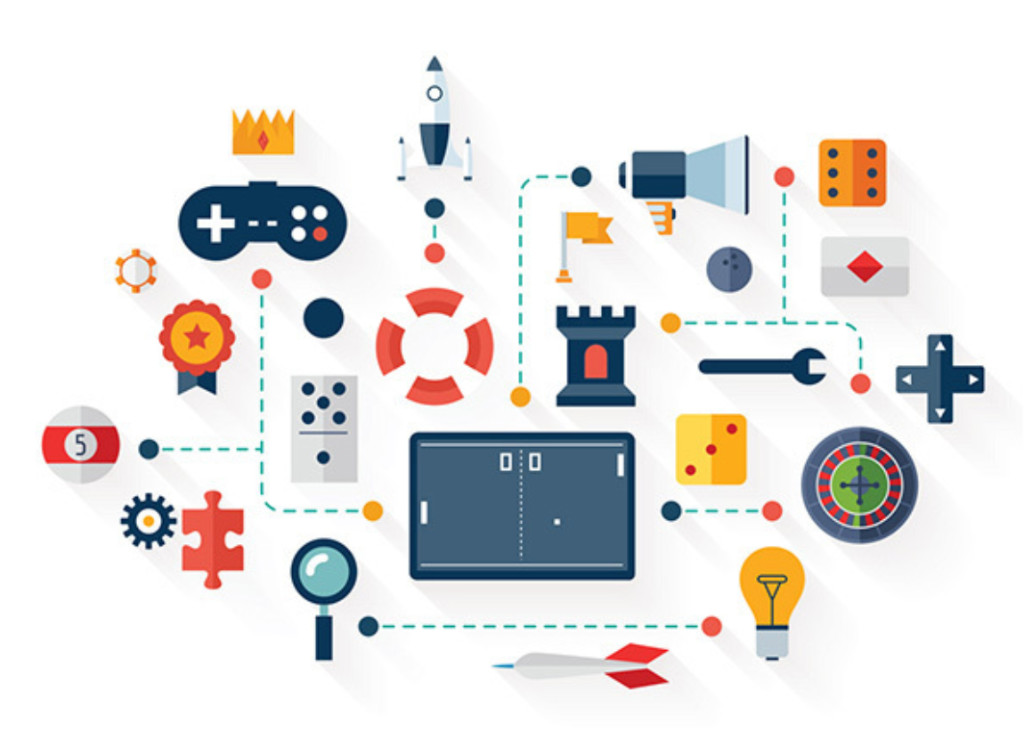
A video game is a computer game designed mainly for entertainment purposes. A video game console is the electronic machine designed to play the games and a video display such as a computer monitor or television is the primary feedback device. The main input device is a controller. A controller can be a keyboard, mouse, game pad, joystick, paddle, our fingers, voice, or any other not yet invented device. Special purpose devices, such as steering wheels for driving games, light guns for shooting games, and drums for musical games may also be used.
Here is the diagram of the Videogame seen as a designed system and flow.
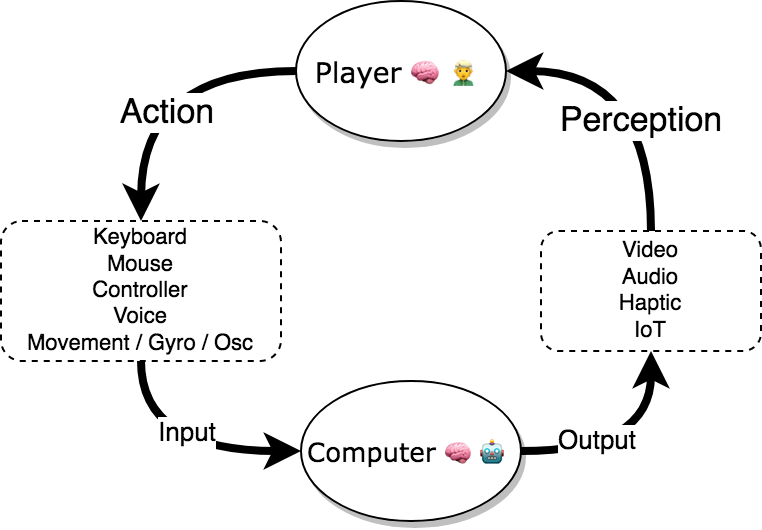
Genres
Adventure
Adventure games are one of the oldest forms of computer game, going back to the early text adventures and interactive fiction of the 1970s and 1980s. They involve the player undertaking series of tasks or puzzles in which they must interact with the virtual world, performing actions, talking to characters and manipulating objects in order to achieve the objectives of the game, often to solve some mystery or complete a quest.
Although the original adventure games were text-based, contemporary commercial adventure games tend use graphics, offering three-dimensional worlds that players can navigate. There is also a growing popularity of simpler web-based adventures, known as point-and-click games, which typically provide two-dimensional environments in which the player has to navigate through rooms and make objects interact to solve the puzzles presented
Adventure games generally depend on mental agility rather than physical dexterity and tend not to be time-dependent. Some adventures combine elements of both and it is common for adventure games to contain mini-games in another genre. In terms of education, adventure games can present a context for problem-solving and lateral thinking, where players have to work out the appropriate actions in order to achieve a goal.
Platform
Platform games involve the movement of the player character through a landscape (usually two-dimensional), jumping up and down between platforms, avoiding obstacles and enemies, and picking up treasure, usually with some overall goal in mind and often in the context of a narrative. Platform games require physical dexterity and the aim is usually to score points and complete levels. The types of skills that they develop are hand–eye coordination, planning and strategizing, problem-solving (the sequence of steps required to get over a particular obstacle for instance) and the ability to think quickly.
Puzzle
Puzzle games primarily involve problem-solving, can take many forms – including words, logic, mathematics – and are often based on traditional puzzles (for example online crosswords or spot-the-difference). Simple puzzle games can be stand-alone but they are also often embedded within a larger narrative structure so that solving the puzzles will complete some larger quest or story. It is common for puzzles to be embedded within other genres such as adventure games as mini-games. Puzzles can be used to support a variety of different types of learning depending on the type of puzzle, including logic, spatial awareness, verbal skills, numeracy skills, and spelling. I would also include quizzes in this category, and they are an example of a game activity that can be used in almost any area of a curriculum, but primarily for recall of facts.
Role Play
Role play games emerged from the face-to-face role-playing games and involve the player taking on the role of a character in another (usually fantasy-based) world. The player can undertake a range of activities including solving quests, fighting, treasure hunting, and interacting with other characters (either other players in the game world or non-player characters). There is usually a mix of problem-solving skills required as well as strategy and sometimes physical dexterity, and although single-player role-playing games exist, they are commonly multi-player. Role play games are usually underpinned by complex statistical models that provide scores for a range of characteristics that determine a character’s abilities and weaknesses. In the context of learning, role-playing games are good for providing a context for building collaborative skills, social interaction, negotiation, management of complex systems (e.g. character statistics), strategy, and working through scenarios.
Shooter
Shooter games have the primary aim of using weapons (or sometimes spells and other special abilities) to defeat opponents, although the action is often embedded within a wider narrative context. They are generally played from a first person viewpoint (FPS First Person Shooter) and are played in real time. This is another genre in which multi-player games are common. Shooter games involve a combination of strategy and dexterity, exploring virtual worlds and defeating enemies and targets. Although this is one genre in which it may be argued that there is less applicability to learning in higher education, there are still many skills that can be acquired by playing such games including forward planning, strategizing, and team working.
Sports
Sports games allow the player to simulate taking part in a sporting event or tournament. They are generally based on physical dexterity and interaction with the gaming interface, but in recent years innovations such as dance mats and consoles that use movement-sensitive devices (the most notable example being the Nintendo consoles) have enabled players to actually undertake physical activity while playing. Sporting games can be used to practice the actual skills of a sport (although in the majority of cases this will be a representation through whatever interaction device is available), tactics, rules and the ability to think and make decisions quickly.
Strategy
Strategy games involve the player making strategic decisions within a scenario in order to meet the goal of the game, which is usually completing a level or solving a particular problem. They can involve, for example, movements of armies, progression of a group through various stages of development, management of resources or creation of environments to achieve specific purposes. For example, the strategy game Age of Empires involves players progressing their empire through stages of civilization. Many strategy games also have elements of simulation built into them in terms of a complex underlying model of a virtual environment, but will tend to have clear goals. Strategy games can be used for teaching planning, decision-making, testing hypotheses, strategic thinking, management skills and seeing the consequences of actions taken.
Casual games
Another type of game (which isn’t really a genre in itself as there are many different types) that is currently growing in popularity is casual games. These games are usually downloaded from gaming sites rather than being available in shops and are cheaper than traditional entertainment games (or free to play online). Casual games are designed to be played in short bursts rather than for prolonged sessions so are chunked into many small levels that all follow the same pattern, so that they can be played for a few minutes at a time and easily stopped and restarted. These games cater for players who simply want to play a game for a short time and do not want to make any great commitment in terms of time or learning how to play. They have simple game play and comparatively low production values. The rise in the use of casual games shows a movement away from the typical ‘hardcore’ gamer to a wider demographic, particularly female and older players, which is more typical of the whole university student demographic, and casual games may be most appropriate for fitting into specific segments of teaching time.
Sandbox
Games with freedom to do / build / create / wander as you like. Pure creativity.
Video Game components
Hardware
The physical components and electronic devices needed to play the game Software. The more common are:
- PC - Personal Computer (can be Windows, MacOS, Linux)
- Browser games (can be accessed by any devices with a standard web browser)
- Console (Xbox/PlayStation/Nintendo Switch)
- TV / Smart TV
- Mobile Smartphones (Android or iOS)
- Mobile Tablets (Android or iOS)
- Handheld devices (Gameboy)
- Wearables (smartwatches)
- VR - Virtual Reality
- AR - Augmented Reality
- Metaverse - an online virtual immersive and social space.
Software
All computer code and digital multimedia assets are stored and managed by the hardware to enable the interactive experience defined by the Game Design.
The software can be acquired by:
- from a physical box/card/disc
- downloading it from Internet or from a local server
- shared by storage devices
- compiled from sources
The license to use it can be:
- commercial (personal). usually it belongs to the buyer and can't be shared.
- commercial (group): you buy a license to use it in a classroom / school / private group.
- subscription / rent: you pay a monthly fee to use it
- free: you download it for free or can play it online without paying anything
- freemium: the game is free but has commercial advertising or you can buy additional options to have the complete game
- open source: not only the game is free, but you have access to the software code, to improve / modify it
Game Design
- game mechanics
- level design / progression
- graphics / aestethics
- environment / lore
- sound / music
- achievements
- characters
- story
- customisation
- purpose
- social interactions
Where to play Video Games?
Today VG can be played in any environment or life situation:
- Indoor (home)
- Outdoor (mobile games)
- Classroom (with PC or mobile)
- Online (wherever there is internet)
- Offline (a standalone game that doesn't require internet)
Good EVG
What makes a good educational video game good?
How good video game designers create games that manage to get new players to learn long, complex and difficult games? They build these games based on the good principles of learning that involve 3 main criteria, Empowered Learners, Problem Solving and Understanding.
-
Empowered Learners: learners feel like active agents (producers) and not just passive recipients (consumers). It includes learning principles such as identity, customization, Manipulation and Distributed Knowledge.
-
Problem-Solving: good learning occurs through though-provoking challenges and problem that push the players creativity and forces them to use their building knowledge to solve problems. It includes principles such as Well-ordered problems, pleasantly frustrating principles, cycles of expertise, and just in Time and On-demand principles.
-
Understanding: good learning is based on acquired systematic thinking and comprehension, which allows the learner to comprehend and understand every element of their content/problem. It includes system Thinking principle and meaning as action image principle.
Good video games employ strategies that causes players to exercise their learning muscles, without knowing it and without having to pay overt attention to the matter.
Good educational video games excite human learning through mind-provoking challenges and hooks. Cognitive scientists identify good educational video games as games that are both fun as well as provide a good educational experience by connecting to the student’s deeper appreciation for learning and their own trajectory in life.
The three large criteria of a good educational game design if implemented in schools would necessitate significant changes in the structure and nature of formal schooling. Empowered Learners, Problem Solving and Understanding all entail important learning principles and features that the more they are present in the selected game, the stronger the game in delivering its content.
So what are the learning principles that a good educational video game is built on?
The first attribute of a good educational video game is how engaging it is?
Engagement is a broad category that involves many properties in order to sustain it. Here is an outline of the learning principles of a good video educational video game.
The surprising truth about learning, motivation and mastery
How do you grab people’s attention? What makes any experience truly engaging over time?
We know that games can be deeply engaging — and that no single type of games holds the key. Stylistically, people seek out a wide variety of different experiences. Just look at today’s gaming landscape, from adrenaline-pumping shooters to candy-coated puzzlers to the creative freedom of Minecraft, one person’s beloved game is another’s worst nightmare.
Beneath the surface, all great games have one thing in common: progressive skill-building. Games keep players engaged by helping them get better at something meaningful.
Skill-Building, Challenge & Flow
It feels good to engage our brains, improve our skills, and make progress on a path towards mastery. Games, sports and education are particularly good at accomplishing this, but every teacher can learn to harness the underlying power of skill-building & challenges.
Structured activities - games, sports, office work - usually revolve around developing and using a skill. And if the level of challenge in the activity increases to match your newfound skill, you’ve got a setup for flow — the ultimate goal of every game and product designer.
Setup the conditions for Flow
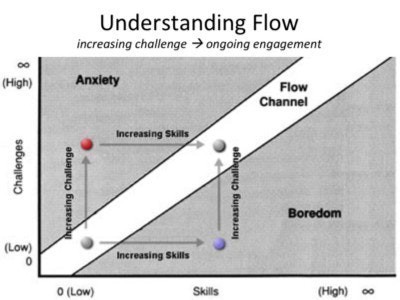
Flow takes effort. Without learning, practice and challenge, there is no flow.
At their core, games are pleasurable learning engines that deliver an experience that’s deeply, intrinsically motivating. Over time you absorb the rules, build your skills, tackle ever-greater challenges — and in the process, you’re transformed in some way that’s meaningful to YOU.
Forget Points — Think Character Transformation

Just as character transformation is the backbone of great drama, personal transformation is the backbone of great gameplay. In games, we are the protagonist — the person with agency, facing a series of choices and challenges along a journey towards mastery. Progress metrics (points, badges, levels, leaderboards, reputation systems) are icing on this learning/mastery cake. These markers help you gauge where you stand, and how far you’ve come, but they’re meaningless as a stand-alone system without something to get better at, some skill to develop.
That’s what makes games truly engaging. To make your learning sessions compelling in the long run, forget points, think character transformation, skill-building and empowering mastery.
Support Intrinsic Pleasure with Extrinsic Scaffolding
Trying to drive long-term engagement with extrinsic rewards is a fool’s errand. Status markers and variable reward schedules are not what makes an experience truly engaging.

Games are built from systems and rules that engage you in a micro-world — a “magic circle” that’s shared by everyone playing the game. That’s the power and pleasure of a game — you get to take a mini-break from daily life, and spend time (together) in an alternate, simplified reality.
If metrics and rewards are your main event, you’ve got a shallow and/or manipulative product that won’t hold people’s interest over time .Well-crafted games are an artful blend of intrinsic pleasure and extrinsic scaffolding. Pleasurable activities are the beating heart; progress scaffolding (points, levels, badges, power-ups) serves to support and amplify the core activities.
Well-crafted games are an artful blend of intrinsic pleasure and extrinsic scaffolding.
Self-Determination Theory: the science of motivation
To create a truly compelling experience, tap into the trinity of Intrinsic Motivation: Autonomy, Mastery, and Purpose. This framework emerged during the 1970s as Self-Determination Theory and was recently re-popularized in Dan Pink’s ‘Drive’ for workplace motivation, and in Rigby and Ryan’s ‘Glued to Games’ for explaining gaming motivations.
Extrinsic rewards can devalue pleasurable tasks
This research shows us that extrinsic metrics and rewards can be effective at getting people to complete simple tasks — BUT these same rewards often backfire and lower effectiveness & motivation for creative or pleasurable tasks
Why is this problematic for long-term engagement? Numerous studies show that extrinsic rewards can de-value otherwise pleasurable tasks like reading or drawing. For example, this famous study took kids who loved reading and rewarded them extrinsically with points and money for reading. Guess what? The kids completely stopped reading for pleasure.
So what’s the solution? As much as you can, design your feedback & rewards system around these three core principles of intrinsic motivations.
Autonomy: Self-Determination & Meaningful Choice
 Autonomy is the feeling of controlling your own destiny. In a game, app or service, this boils down to how and when you offer choices.
Autonomy is the feeling of controlling your own destiny. In a game, app or service, this boils down to how and when you offer choices.
Great games offer meaningful choices with interesting constraints. Think of Settlers of Catan, World of Warcraft, Minecraft, even Kickstarter — all systems that can be explored and mastered by following your interests and making a series of increasingly interesting choices.
Mastery: Skill-building, feedback & challenge
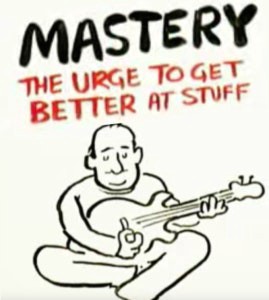
Mastery taps into the feeling of getting better at something. Games offer the player a set of actions and choices within a constrained, rule-based environment.
In a great game, mastering the ruleset is deeply pleasurable. The lack of anything to master is often why simple gamification fails. Points, badges, and leaderboards aren’t compelling unless you’re improving along some personally meaningful dimension.
Purpose: connect w/something greater than yourself

Purpose is all about connectedness and relatedness — with other people, with a shared cause , with something bigger than yourself. And
numerous studies have shown that people who cultivate meaningful relationships report higher levels of happiness.
Purpose is often best communicated through storytelling. Here’s the thing: the most powerful story is happening inside your customer’s head — the personal narrative of how engaging with your product transforms her into someone better, stronger, more powerful, more skillful, more connected to the issues and people she cares about.
Intrinsic Motivation
Intrinsic motivation is when you are motivated by personal satisfaction or enjoyment instead of external factors like reward or punishment. There are ways to make tasks more intrinsically motivating.
Intrinsic motivation is the act of doing something without any obvious external rewards. You do it because it’s enjoyable and interesting, rather than because of an outside incentive or pressure to do it, such as a reward or deadline.
An example of intrinsic motivation would be reading a book because you enjoy reading and have an interest in the story or subject, rather than reading because you have to write a report on it to pass a class.
Intrinsic motivation theory
There have been a number of different proposed theories to explain intrinsic motivation and how it works. Some experts believe that all behavior is driven by external reward, such as money, status, or food. In intrinsically motivated behaviors, the reward is the activity itself.
The most recognized theory of intrinsic motivation was first based on people’s needs and drives. Hunger, thirst, and sex are biological needs that we’re driven to pursue in order to live and be healthy.
Just like these biological needs, people also have psychological needs that must be satisfied in order to develop and thrive. These include the need for competence, autonomy, and relatedness.
Along with satisfying these underlying psychological needs, intrinsic motivation also involves seeking out and engaging in activities that we find challenging, interesting, and internally rewarding without the prospect of any external reward.
📽 #VIDEO # The puzzle of motivation | Dan Pink
Intrinsic motivation vs. extrinsic motivation
Intrinsic motivation comes from within, while extrinsic motivation arises from outside. When you’re intrinsically motivated, you engage in an activity solely because you enjoy it and get personal satisfaction from it.
When you’re extrinsically motivated, you do something in order to gain an external reward. This can mean getting something in return, such as money, or avoiding getting into trouble, such as losing your job.
| Motivation | Goals | |
|---|---|---|
| Intrinsic | You do the activity because it’s internally rewarding. You may do it because it’s fun, enjoyable, and satisfying. | Goals come from within and the outcomes satisfy your basic psychological needs for autonomy, competence, and relatedness. |
| Extrinsic | You do the activity in order to get an external reward in return. Goals are focused on an outcome and don’t satisfy your basic psychological needs. | Goals involve external gains, such as money, fame, power, or avoiding consequences. |
Intrinsic motivation examples
You’ve likely experienced examples of intrinsic motivation throughout your entire life without giving it much thought.
Some examples of intrinsic motivation are:
- participating in a sport because it’s fun and you enjoy it rather than doing it to win an award
- learning a new language because you like experiencing new things, not because your job requires it
- spending time with someone because you enjoy their company and not because they can further your social standing
- cleaning because you enjoy a tidy space rather than doing it to avoid making your spouse angry
- playing cards because you enjoy the challenge instead of playing to win money
- exercising because you enjoy physically challenging your body instead of doing it to lose weight or fit into an outfit
- volunteering because you feel content and fulfilled rather than needing it to meet a school or work requirement
- going for a run because you find it relaxing or are trying to beat a personal record, not to win a competition
- taking on more responsibility at work because you enjoy being challenged and feeling accomplished, rather than to get a raise or promotion
- painting a picture because you feel calm and happy when you paint rather than selling your art to make money
Intrinsic motivation factors
Everyone’s different and that includes what motivates us and our perspectives of rewards. Some people are more intrinsically motivated by a task while another person sees the same activity extrinsically.
Both can be effective, but research suggests that extrinsic rewards should be used sparingly because of the overjustification effect. Extrinsic rewards can undermine intrinsic motivation when used in certain situations or used too often. The rewards may lose their value when you reward behavior that was already intrinsically motivating. Some people also perceive extrinsic reinforcement as coercion or bribery.
The overjustification effect has inspired an entire field of study that focuses on students and how to help them reach their full potential. Though experts are divided on whether extrinsic rewards have a beneficial or negative effect on intrinsic motivation, a recent study showed that rewards may actually encourage intrinsic motivation when given early in a task.
Researchers examined how reward timing influenced intrinsic motivation. They found that giving an immediate bonus for working on a task, rather than waiting until the task was completed, increased interest and enjoyment in it. Getting an earlier bonus increased motivation and persistence in the activity that continued even after the award was removed.
Understanding the factors that promote intrinsic motivation can help you see how it works and why it can be beneficial. These factors include:
- Curiosity. Curiosity pushes us to explore and learn for the sole pleasure of learning and mastering.
- Challenge. Being challenged helps us work at a continuously optimal level work toward meaningful goals.
- Control. This comes from our basic desire to control what happens and make decisions that affect the outcome.
- Recognition. We have an innate need to be appreciated and satisfaction when our efforts are recognized and appreciated by others.
- Cooperation. Cooperating with others satisfies our need for belonging. We also feel personal satisfaction when we help others and work together to achieve a shared goal.
- Competition. Competition poses a challenge and increases the importance we place on doing well.
- Fantasy. Fantasy involves using mental or virtual images to stimulate your behavior. An example is a virtual game that requires you to answer a question or solve a problem to move to the next level. Some motivation apps use a similar approach.
Gamification
Game-based learning should not be confused with gamification.
DGBL offers a delicate balance between in-class lessons and educational gameplay. Teachers introduce students to new concepts and show them how they work. Then students practise these concepts through digital games.
Gamification involves taking elements from games -- such as game mechanics, leaderboards, levels, or points -- and applying them to non-game contexts to engage users better. The purpose of this is to make lessons that might not be enjoyable more engaging for students.
Some examples of game mechanics used in gamification are:
- Goals - Complete the task and get a reward, such as a badge or points.
- Status - Users increase their level or rank through completing activities.
- Leaderboards show who is ‘winning’ and inspire users to work harder to compete.
- Community - Users are paired or put in groups to solve problems, complete activities, or otherwise achieve an objective.
- Education - Tips, tricks and quizzes are given to the user throughout the process.
- Rewards - As mentioned above, points and badges are common, and useful, rewards. Other rewards could be discounts, coupons, or gift cards. This fuels the user’s motivation and keeps engagement high.
Gamification takes an element of education and replaces it with a game-based element. For instance, a teacher may replace grades with levels or experience points.
Proponents of gamification often cite research demonstrating the positive impacts of these interventions on outcomes such as academic performance, student motivation, customer retention, organizational productivity, or user engagement in online platforms.
The Flow state
The Flow state in an experience as the equilibrium point between challenge and ability. If the challenge is quite higher than the ability the result will be the person getting frustrated and with the feeling of anxiety, on the other hand if the person’s skill is higher than the challenge presented he will experience boredom. Games should be designed and calibrated the ensure that the player maximises its staying within the flow channel

Games selection
After we have established the definition of game-based learning, its basis, and how its implementation enhances several social and cognitive skills, the question now diverts to how we can select an educational video game that elicit engagement and motivation as well as ensure that it is designed with the intended educational content. There are many educational video games available for class implementation, however, many are redundant, easy or stimulatingly boring that students are just not as interested or motivated to play. In this unit, we will discuss the characteristics of a good educational video game, its attributes, and how educators can ensure that they are providing their students with the best quality of learning through the selected video game.
Where to find EVG
When choosing an EVG we have several options where to look. We could:
- Use entertainment/commercial off-the-shelf (COTS) games. These games are already in the stores and could have additional or not explicit educational content (Assassin's Creed / Civilization)
- Modify entertainment games. Many commercial games allow to create custom missions or quests (Kerbal Space Academy)
- Use virtual worlds. There are many "sandbox" games where the player sparks creativity and teacher could pre-build the learning environment (Minecraft)
- Use educational games created ad hoc (MinecraftEdu)
- Create original games. If a special requirements is needed, you could develop or ask to develop a custom game (Antura)
- Let students create games, to design a game you have to study and manage the learning content very deeply
Games 4 Good
Games for good have the mission to help improving the world, with positive social impact, improved knowledge about social issues, with direct experience of human problems.
- Education
- Health
- Empathy
- Ethics
- Politics and History
- Religion
- Wars
- Epidemics
- Sexism and racism
- Environment and Climate change
- Energy
Games benefits
Additionally, playing video games has a huge impact on the development of cognitive, collaboration, creative problem solving, and communication skills of students.
As well as improving learning abilities, here are some other benefits of Games:
- speed up response times: improve troubleshooting skills by posing problems that must be solved in a set time.
- encourage teamwork: multiplayer games boost teamwork in problem-solving.
- stimulate creativity, focus, and visual memory: stimulate these aspects by setting goals that require concentration, imagination, and remembering details to achieve them.
- improve strategy and leadership: put players in command, honing their abilities to resolve disputes, interact with other players and make decisions.
- teach languages: they are useful for learning other languages through on-screen instructions, chats for communicating with other players, or the narration of the story itself.
- improve critical thinking: with underlying ethical, philosophical and social basis, and their ability to make players think.
Challengers
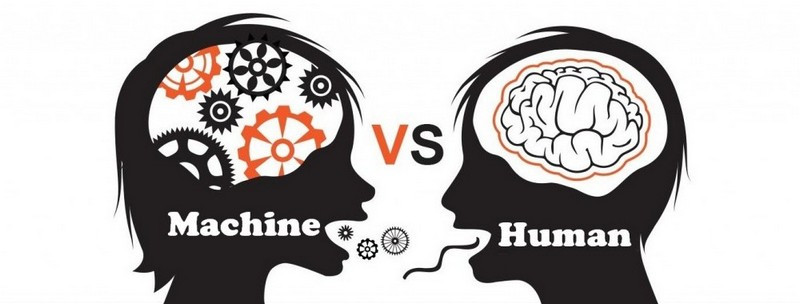
Video games allow a player to challenge some-one on the same screen, or in the same room (each one with its networked device), or anywhere in the world via internet (in realtime or at turned based play). Players can even challenge recorded adversaries, or even them self!
New advances with Artificial Intelligence allow players to play against advanced artificial players, that could be even be trained to play with a particular style or behaviours (Imitation Learning).
Unit review
QUIZ
- Select all virtues of Videogames
- Select what we can learn by playing videogames
Discuss in your opinion
- What are the important features that a good educational video game should have?